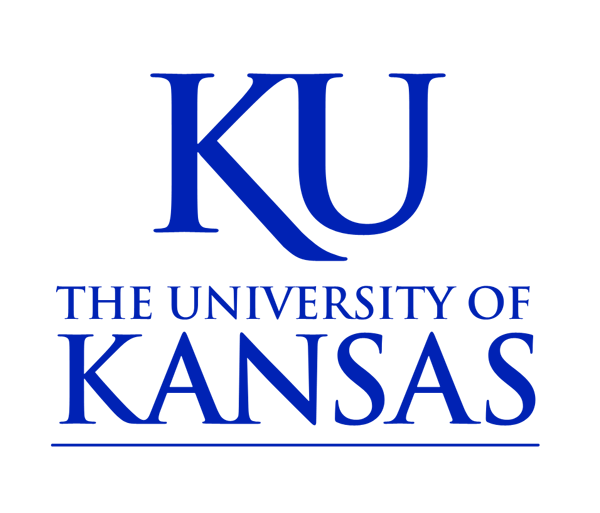From the Office of Public Affairs | http://www.news.ku.edu
Headlines
Study sheds light on how songs, movies and memories shape how people enjoy lighthearted entertainment
LAWRENCE — A new study from the University of Kansas has found that people tend to have more memories associated with older songs and movie clips than newer ones, and they tend to be happier memories as well. People also tend to appreciate content that triggers a memory more, and the findings — from a KU assistant professor of journalism & mass communications — help shed light on why people often find meaning in lighthearted entertainment such as pop music or superhero movies. The study was published in the Journal of Communication.
Kansas Public Radio wins Station of the Year for record 21st time
LAWRENCE — Kansas Public Radio, based at the University of Kansas, has earned the Station of the Year award for a record 21st time from the Kansas Association of Broadcasters (KAB) and received 17 individual accolades, including eight first place awards, four second place awards and five honorable mention awards. Winners were recognized at an awards dinner during the KAB Annual Convention in Manhattan on Oct. 24.
‘How the Light Gets In’ shares experiences of formerly incarcerated women through interactive installation
LAWRENCE — A multisite exhibition opening Nov. 3 at the Spencer Museum of Art and Lawrence Public Library shares the experiences of formerly incarcerated women reentering society. The interactive installation “How the Light Gets In” was created by artist Sarah Newman in collaboration with Hyunjin Seo and the KU Center for Digital Inclusion in the William Allen White School of Journalism & Mass Communications.
Center for East Asian Studies opens year of public health programming with film screenings
LAWRENCE — Public health is the focus of programming from the Center for East Asian Studies this year, beginning with a film series Oct. 25-28 at the Kansas Union. The series opens with the Academy Award-winning film “Parasite” at 6 p.m. Tuesday. The four feature films deal with diverse public-health related issues and will be followed by discussions led by KU faculty and graduate student commentators.
Full stories below.
————————————————————————
Contact: Mike Krings, KU News Service, 785-864-8860, mkrings@ku.edu, @MikeKrings
Study sheds light on how songs, movies and memories shape how people enjoy lighthearted entertainment
LAWRENCE — That song really takes me back.
We’ve all heard a song or seen a movie that brings back a memory or reminds us of an earlier time. A new study from the University of Kansas has found that people tend to have more memories associated with older songs and movie clips than newer ones, and they tend to be happier memories as well. People also tend to appreciate content that triggers a memory more, and the findings help shed light on why people often find meaning in lighthearted entertainment such as pop music or superhero movies.
Researchers played song clips from artists either from the current day or roughly 10 years ago and did the same with movie clips, then asked research participants about any associated memories from the samples. Older entertainment evoked more memories, and people appreciated older music more as well. They appreciated both forms more when they activated memories, regardless of when it was released.
“What we’re trying to do is understand what happens when we encounter media and how that affects us. We also look at the implications regarding our sense of identity,” said Judy Watts, assistant professor of journalism & mass communications at KU and a co-author of the studies. “People often travel mentally back to a time period when they re-encounter beloved media, but we want to unpack what exactly they’re experiencing when they do that. Did they have appreciation, happiness or other emotions? Music was picked for the first study because it tends to be especially nostalgic. The second study was designed to see if those same effects would happen with audiovisual cues.”
The studies, written with co-authors James Alex Bonus and C. Joseph Francemone of Ohio State University, was published in the Journal of Communication.
For the music-based study, more than 400 college students heard six song selections from an artist, released either in 2020 or roughly a decade earlier, during their early adolescence from artists such as Taylor Swift, John Legend or Charli XCX. They were asked whether the song activated a memory, and if so to describe the memory. They were also asked about their memory engagement with statements such as “I was so young and naïve in this memory,” “life was so much simpler at the time of this memory” or “I felt completely immersed in this memory.”
For the second study, more than 400 college students were similarly shown clips from a recent or older movie, such as “Frozen” or “Frozen II,” or “Avengers: Endgame” or “Guardians of the Galaxy.” They were then asked the same questions about whether the media had associated memories, and of what type.
As expected by the researchers, study one results showed older music produced more memory recall and the songs were more appreciated. Additionally, the memories associated with older music were also older, more positive and had more downward temporal comparisons — meaning participants felt that while the memories were positive, they also believed their lives were better now than at the time of the memory. Whether a memory was specific or more social did not vary widely, but several variables such as memory recall, memory immersion and positive effect were predictors of appreciation. That suggests people appreciate any type of entertainment that activates a memory, the researchers wrote.
The study with movie clips replicated most of the memory-related findings from that conducted with music, particularly older pieces of media having more associated memories, and those being older, more positive and having more temporal comparisons. One notable difference was that specific memories were a predictor of appreciation of the content versus general memories — and were associated with less appreciation. Also, appreciation did not differ between older and newer movies, but people had a higher level of appreciation overall for movies versus music.
The findings help further understanding of autobiographical memory and how media effects are part of such mental processes. While it has long been understood and accepted that a song, movie or other piece of popular media can trigger a memory, little research has been conducted on whether these memories result in meaningful experiences. In contrast, media effects research tends to focus on more “meaningful” media, such as highly regarded, classic or highbrow forms of entertainment, not necessarily lighter fare such as pop songs, superhero movies or other popular forms of entertainment, Watts said. Better understanding of the emotional outcomes of such media-induced reminiscence is important as well, as such media can potentially help people deal with stress and negative feelings. That is especially true of the temporal findings explored in the study, or whether people feel like life was better at the time of a memory induced by media, or if they are doing better now than when they were younger, and what types of memories are associated with appreciation of media.
“We tend to assign meaning to pieces of entertainment we experience in formative times of our lives. That’s typically cast off as something that’s not particularly meaningful,” Watts said. “But we think it matters because it’s about how you experienced it, often with people we care about, and when we revisit it, we can feel warm, happy or other emotions. We’re interested in the psychological processes of memory and media, and it is one way, I think, to speak to a person’s memories, how they connect media to a time, place or people.”
-30-
————————————————————————
The official university Twitter account has changed to @UnivOfKansas.
Refollow @KUNews for KU News Service stories, discoveries and experts.
Tweets by KUnews
————————————————————————
Contact: J. Schafer, Kansas Public Radio, 785-864-2246, jschafer@ku.edu, @KPRNews
Kansas Public Radio wins Station of the Year for record 21st time
LAWRENCE — Kansas Public Radio, based at the University of Kansas, has earned the Station of the Year award for a record 21st time from the Kansas Association of Broadcasters (KAB). The KAB announced the award Aug. 18. The Station of the Year award was first presented in 1996. KPR won the prize that first year and has now earned the KAB’s highest honor more than any other radio or TV station in the state.
In addition to the coveted top prize, the public radio station received 17 individual accolades, including eight first place awards, four second place awards and five honorable mention awards.
The individual honors were earned in hard news feature/enterprise story, station excellence, sports feature, excellence in diversity/equity/inclusion news, station website, public service announcement, editorial/commentary, complete newscast by local station, spot news, special program, excellence in multimedia/digital storytelling and public affairs program. This year’s individual awards for KPR:
Hard News Feature/Enterprise Story
Honorable Mention: “Kansas Governor Promotes $1 Billion Incentives Package to Attract Mystery Manufacturer,” by Jim McLean
Station Excellence
First place: Kansas Public Radio, “Winning at Broadcasting Since 1952,” KPR staff
Sports Feature
First place: “It’s Rodeo Season in Kansas and a Rodeo Museum May Be in the Works,” by Greg Echlin, J. Schafer (editor)
Second place: “A Man with a Tail, a Crown and a ‘Dream Job’ as the Royals’ Mascot,” by Jim McLean
Honorable Mention: “Kansas Jayhawks Seek Revenge in 16th Final Four Appearance,” by Greg Echlin, J. Schafer (editor)
Excellence in Diversity/Equity/Inclusion News
First place: Conversations: “What’s Up with White Women? Unpacking Sexism and White Privilege in Pursuit of Racial Justice,” by Dan Skinner
Honorable mention: Conversations: “Forever Boy: A Mother’s Memoir of Autism and Finding Joy,” by Dan Skinner
Station Website
Second place: KansasPublicRadio.org, managed by KPR Staff, Danny Mantyla
Public Service Announcement
Honorable mention: “Stopping the Coronavirus Starts with Me and You,” by Kaye McIntyre, KPR Staff
Editorial/Commentary
Second place: “Thinking of Baseball in the Cold of Winter and Remembering a Kansas Great,” by Rex Buchanan
Complete Newscast by Local Station
First place: “All Things Considered News with Laura Lorson,” Laura Lorson
Second place: “All Things Considered News with J. Schafer,” J. Schafer
Spot News
First place: “Right-Wing Extremism Has Been Taking Root in Rural Kansas for Decades,” by Jim McLean
Special Program
First place: Conversations: “The Sleep Deprived Teen,” by Dan Skinner
Excellence in Multimedia/Digital Storytelling
First place: The KPR Presents Book Club: “The Queen’s Gambit,” by Kaye McIntyre
Honorable mention: The KPR Presents Book Club: “Sitting Pretty,” with Rebekah Taussig, by Kaye McIntyre
Public Affairs Program
First place: KPR Presents: “A Remembrance of Bob Dole,” by Kaye McIntyre.
The Kansas Association of Broadcasters recognized this year’s winners at an awards dinner during the KAB Annual Convention in Manhattan on Oct. 24.
-30-
————————————————————————
Subscribe to KU Today, the campus newsletter,
for additional news about the University of Kansas.
http://www.news.ku.edu
————————————————————————
Contact: Elizabeth Kanost, Spencer Museum of Art, 785-864-0142, elizacat@ku.edu, @SpencerMuseum
‘How the Light Gets In’ shares experiences of formerly incarcerated women through interactive installation
LAWRENCE — A multisite exhibition opening Nov. 3 at the Spencer Museum of Art and Lawrence Public Library shares the experiences of formerly incarcerated women reentering society. The interactive installation “How the Light Gets In” was created by artist Sarah Newman in collaboration with Hyunjin Seo and the KU Center for Digital Inclusion in the William Allen White School of Journalism & Mass Communications.
Newman and Seo, Oscar Stauffer Professor of Journalism, collaborated with women in reentry through creative workshops. The resulting project is designed to create conversation about the structural barriers and societal biases that these women experience.
“The work is intended to invert and complicate the normal expectations of knowledge in society,” Newman said. “Who holds knowledge and wisdom, and who is situated to teach or transmit that knowledge to others?”
The women in the program wrote texts that will be displayed through immersive installations at both the Spencer Museum and Lawrence Public Library. Printers in each space will continuously print out statements by these women that visitors can read and take with them. Visitors are also invited to share their experiences by responding to prompts on laptops in both spaces, which will also be sent to the printers’ queues. Informed by the wisdom of the women in this program as well as of the audience, this exhibition encourages viewers to approach others with compassion, curiosity and humility.
“The Center for Digital Inclusion is pleased to collaborate with artist Sarah Newman, the Spencer Museum of Art and Lawrence Public Library on this exhibition providing women in our technology education program an opportunity to offer insights and communicate with a broader public,” Seo said.
“How the Light Gets In” will remain on view at the Spencer Museum and Lawrence Public Library through Jan. 8, 2023. The exhibition and related programs are supported by the National Endowment for the Arts, the Kansas Creative Arts Industries Commission, the Mellon Foundation and the Linda Inman Bailey Exhibitions Fund.
Related programming
The Return Project: Women in Reentry, Technology Education, and Artistic Collaboration
Nov. 3: 4-6 p.m., Spencer Museum of Art
The opening reception of “How the Light Gets In” will include a panel discussion with project participants and gallery talk with artist Sarah Newman.
Teen Zone Expanded: Printmaking
Nov. 30: 2-4 p.m., Lawrence Public Library
Spencer Museum staff will lead a printmaking activity in the Library’s Teen Zone inspired by the writings of formerly incarcerated women that are included in “How the Light Gets In.”
Gallery Talk: “How the Light Gets In”
Dec. 8: 10:15–11 a.m., Spencer Museum of Art
Spencer Curator Joey Orr discusses themes in artist Sarah Newman’s installation “How the Light Gets In.”
-30-
————————————————————————
Don’t miss new episodes of “When Experts Attack!,”
a KU News Service podcast hosted by Kansas Public Radio.
https://kansaspublicradio.org/when-experts-attack
————————————————————————
Contact: LaGretia Copp, Center for East Asian Studies, 785-864-0307, lagretia.copp@ku.edu, @KUEastAsia
Center for East Asian Studies opens year of public health programming with film screenings
LAWRENCE — Public health is the focus of programming from the Center for East Asian Studies this year, beginning with a film series Oct. 25-28 at the Kansas Union. The four feature films deal with diverse public-health related issues and will be followed by discussions led by KU faculty and graduate student commentators. All films are free and open to the public.
1. “Parasite” (Korean): 6-8:45 p.m. Tuesday, Oct. 25, Kansas Union, Divine Nine Room. Discussion led by Yan Bing Zhang, professor of communication studies.
2. “The Farewell” (Chinese): 6-8:30 p.m. Wednesday, Oct. 26, Kansas Union, Centennial Room. Discussion led by Changming Duan, professor of educational psychology.
3. “Go Away Mr. Tumor” (Chinese): 6-8:30 p.m. Thursday, Oct. 27, Kansas Union, Divine Nine Room. Discussion led by Hui Cai, associate professor of architecture.
4. “The House Where the Mermaids Sleep” (Japanese): 6-8:45 p.m. Friday, Oct. 28, Kansas Union, Divine Nine Room. Discussion led by Brad Cokelet, associate professor of philosophy.
The film series is part of the Center for East Asian Studies’ Title VI grant activities. Its 2022-2026 grant uses the conceptual frame of “Global Asia” to address diverse perspectives on nationally and internationally pressing issues. This year’s theme, shared by all KU area studies centers, is public health. It will address various related issues and concerns through educational activities such as a movie series, workshops and a spring conference. The intent is to support interdisciplinary discussions of structural inequalities, social well-being, mental health, environmental injustice and culturally specific medical practices through the lens of “global Asia.”
The importance of public health cannot be overstated, according to Akiko Takeyama, CEAS director.
“COVID-19 opened our eyes to the issue of public health that impacts our lives in many different ways: reliable resources, preventive medicine, structural inequalities, care work and culturally different reactions to the issue,” Takeyama said. “Thus, the theme of public health addresses not only science, medicine and technology but also social relations, cultural practices and a wide range of different experiences. Our center’s mission intersects with what the Title VI grant expects of us: to provide Asian cultures and studies to reflect a wide range of perspectives and generate meaningful dialogues. It is our pleasure to shed light on public health in a global context through the lens of Asia.”
To achieve these goals, the center created a public health steering committee consisting of CEAS- affiliated faculty from education, architecture, communication studies and philosophy. This interdisciplinary committee works collaboratively and shares ideas and insights on public health issues through their diverse perspectives. The committee hopes the film series will start an open-ended conversation leading toward a two-day spring symposium in April 2023. The goal of the symposium, according to Ayako Mizumura, CEAS academic director and steering committee chair, is “to bring graduate students and faculty together to foster further active interactions, knowledge exchanges and academic collaboration” and to create a “community building tool among faculty, public scholars and students, as well as local community members.”
-30-
————————————————————————
KU News Service
1450 Jayhawk Blvd.
Lawrence KS 66045
Phone: 785-864-3256
Fax: 785-864-3339
kunews@ku.edu
http://www.news.ku.edu
Erinn Barcomb-Peterson, director of news and media relations, ebp@ku.edu
Today’s News is a free service from the Office of Public Affairs




